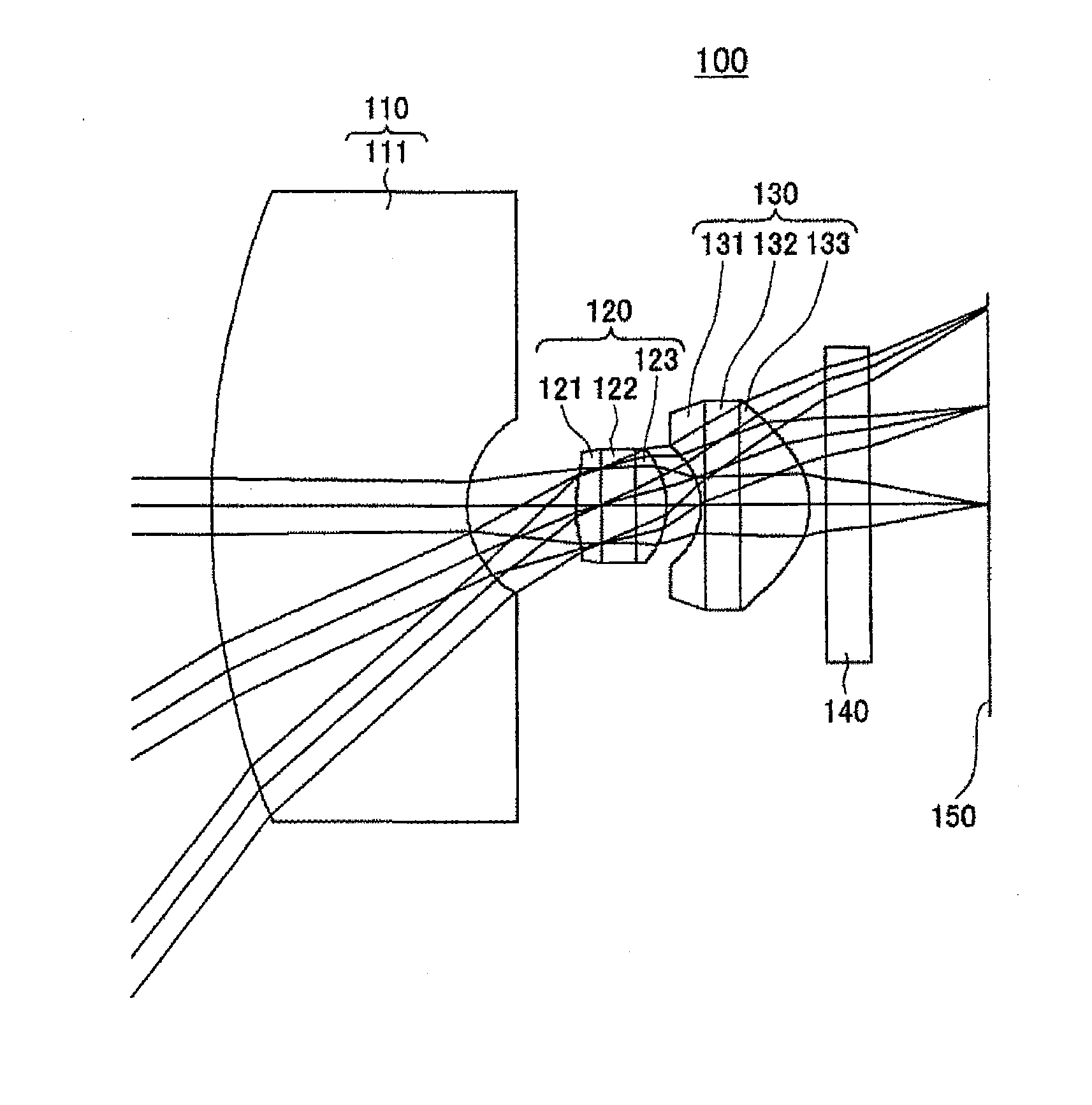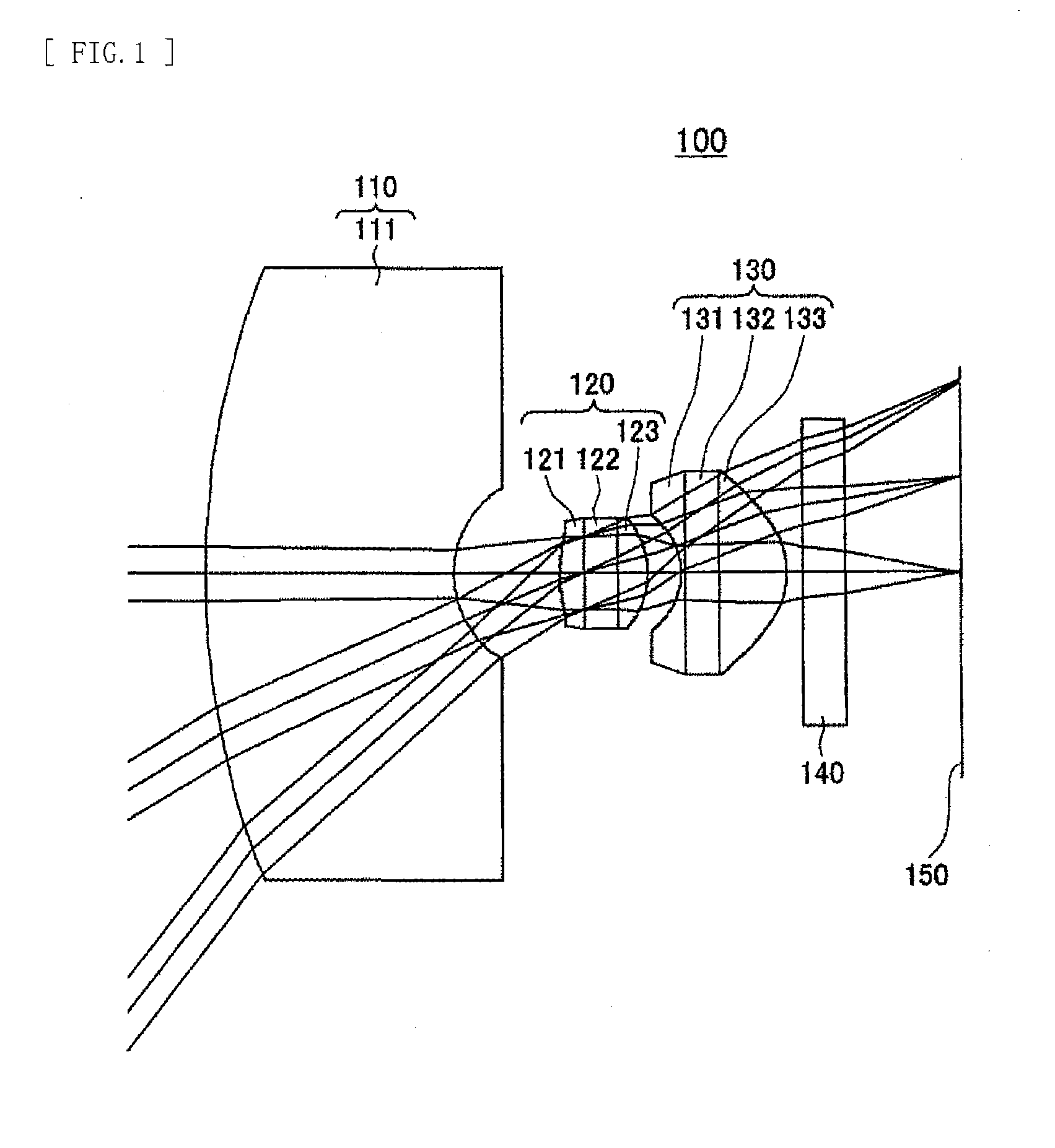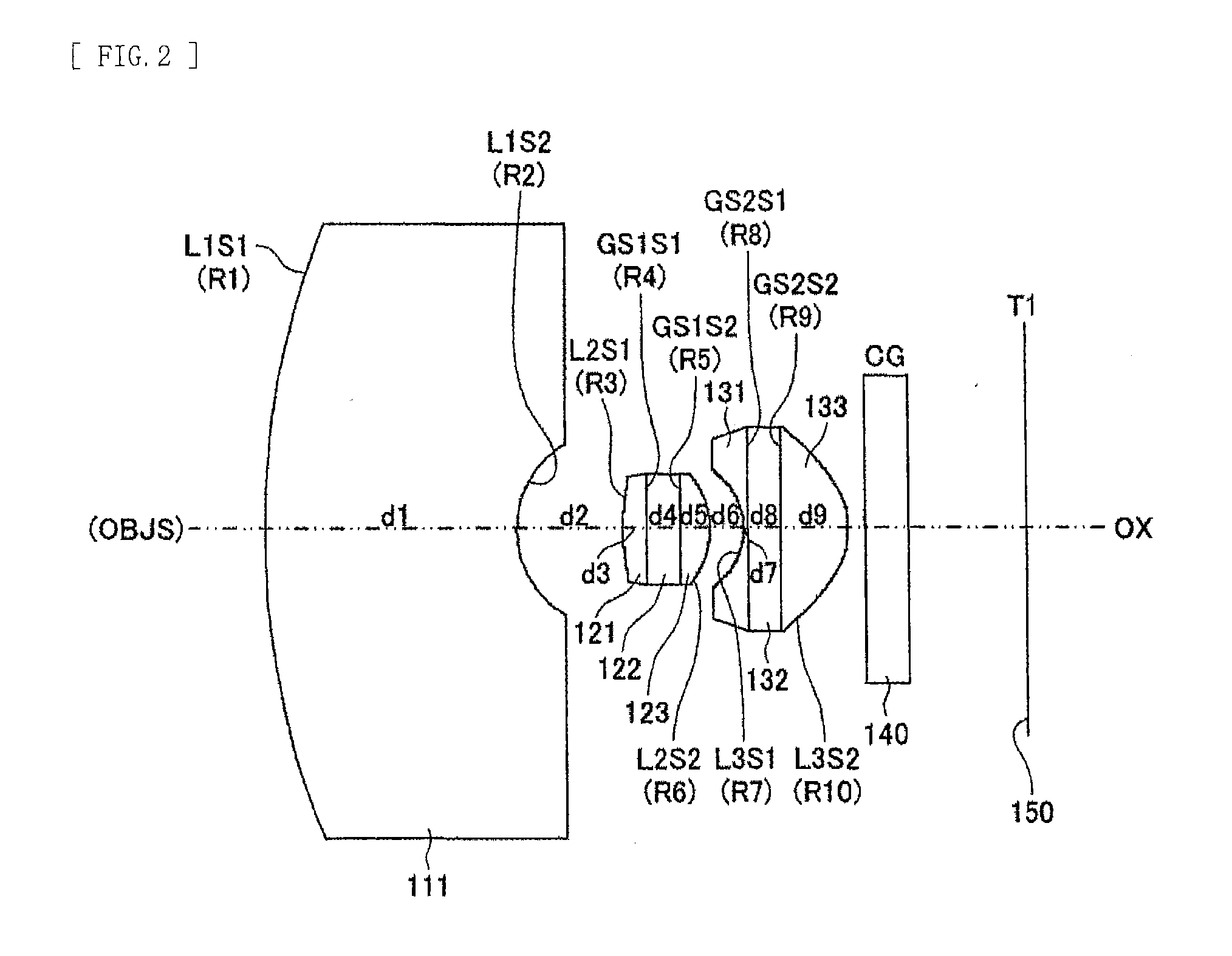Optical unit and image pickup apparatus
a technology of optical units and pickup apparatuses, applied in the field of optical units and image pickup apparatuses, can solve the problems of large optical distortion and insufficient elimination of aberration, and achieve the effects of reducing optical distortion to a small amount, reducing aberration, and reducing aberration
- Summary
- Abstract
- Description
- Claims
- Application Information
AI Technical Summary
Benefits of technology
Problems solved by technology
Method used
Image
Examples
first embodiment
1. First Embodiment
[0023]FIG. 1 is a diagram illustrating a configuration example of an image pickup lens adopting an optical unit according to a first embodiment of the present disclosure.
[0024]An image pickup lens 100 of the present first embodiment includes a first lens group 110, a second lens group 120, a third lens group 130, a cover glass 140, and an image plane 150 that are arranged in order from object plane OBJS toward the image plane as shown in FIG. 1. The image pickup lens 100 is formed as a single focus lens. The first lens group 110, the second lens group 120, and the third lens group 130 form an optical unit.
[0025]In the first embodiment, the second lens group 120 and the third lens group 130 are each formed of a cemented body that includes a plurality of lens elements arranged with a transparent member in between. The first lens group 110 includes only a single first lens element 111.
[0026]The first lens group 110 includes the first lens element 111 that is a glass ...
example 1
[0053]Table 1, Table 2, Table 3, and Table 4 show respective numeral values of Example 1. The respective numeral values of Example 1 correspond to the image pickup lens 100 in FIG. 1. Example 1 is a design example for a ¼-sized CCD or CMOS imager.
[0054]Table 1 shows a curvature radius (R: mm), a space (d: mm), a refractive index (nd), and a dispersion value (νd) of each of the lens elements, the glass substrates (transparent members), etc. corresponding to the respective surface numbers of the image pickup lens in Example 1.
TABLE 1Lens Configuration Data of Example 1SurfacenumberRdndνdL1S1:9.4653.0001.5264.2L1S2:1.1651.264L2S1:2.1500.2781.5929.6GS1S1:INFINITY0.4001.5264.2GS1S2:INFINITY0.3621.5157.3L2S2:−0.9260.402L3S1:−0.7560.0501.5929.6GS2S1:INFINITY0.4001.5264.2GS2S2:INFINITY0.8041.5157.3L3S2:−0.9110.200CG:INFINITY0.5001.5264.2T1:INFINITY1.406
[0055]Table 2 shows fourth-degree, sixth-degree, eighth-degree, and tenth-degree aspheric surface coefficients of the face L2S1 of the secon...
second embodiment
2. Second Embodiment
[0060]FIG. 4 is a diagram illustrating a configuration example of an image pickup lens according to a second embodiment of the present disclosure.
[0061]An image pickup lens 100A according to the second embodiment shown in FIG. 4 basically includes three groups, that is, a first lens group 110A, a second lens group 120A, and a third lens group 130A, as in the first embodiment. The second lens group 120A and the third lens group 130A are each formed of a cemented body that includes a plurality of lens elements arranged with a transparent member in between also in the second embodiment. The first lens group 110A includes only the single first lens element 111.
[0062]The first lens group 110A includes the first lens element 111 that is a glass spherical lens equivalent to BK7 available from SCHOTT AG that has negative power and has a concave shape facing toward the image plane.
[0063]The second lens group 120A is formed of a cemented body that includes the second lens ...
PUM
 Login to View More
Login to View More Abstract
Description
Claims
Application Information
 Login to View More
Login to View More - R&D
- Intellectual Property
- Life Sciences
- Materials
- Tech Scout
- Unparalleled Data Quality
- Higher Quality Content
- 60% Fewer Hallucinations
Browse by: Latest US Patents, China's latest patents, Technical Efficacy Thesaurus, Application Domain, Technology Topic, Popular Technical Reports.
© 2025 PatSnap. All rights reserved.Legal|Privacy policy|Modern Slavery Act Transparency Statement|Sitemap|About US| Contact US: help@patsnap.com



